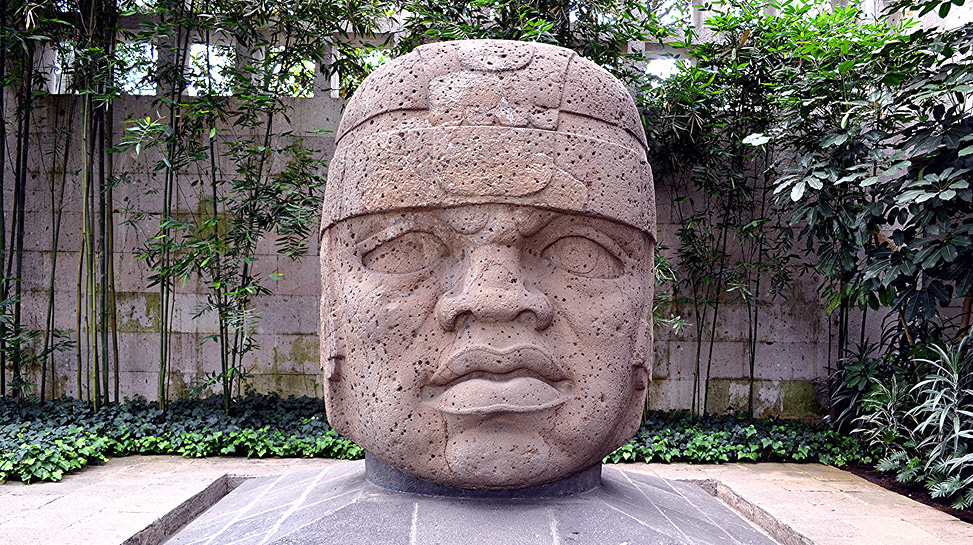
This Olmec Colossal Heads are from about 3,400 years ago, Gulf Coast, Central America. Today, they can be found in several Mexican museums, including Mexico City’s National Museum of Anthropology
Sometimes called the mother culture of Mesoamerica, the Olmec civilization rose from the swampy forests of the Mexican Gulf Coast between about 400 and 1,400 B.C. More than two millennia later, in A.D. 1862, a farmer digging the same land struck a colossal stone head. It was the first of 17 similar heads yet to be recovered, thought to be portraits of Olmec rulers.
The imposing statues stand between 5 and 10 feet tall, each weighing more than a full-grown elephant. They portray surly men with almond-shaped eyes, flat noses and plump lips. But each head wears a unique visage, expression and headdress, supporting the idea that the carved boulders depict particular leaders.
The first accidental discovery occurred at Tres Zapotes in the foothills of the Tuxtlas Mountains, which provided the basalt stone used to make them. But archaeologists later uncovered most of the heads nearly 60 miles from the basalt source, at the ancient capitals of San Lorenzo and La Venta. Though surely laborious, it remains unclear how the Olmec transported these massive boulders, eventually carved and displayed in central plazas. And, several heads seem to have been broken and buried long ago, leading some archaeologists to think ancient people deliberately destroyed old statues as new rulers seized power.

Leave a Reply